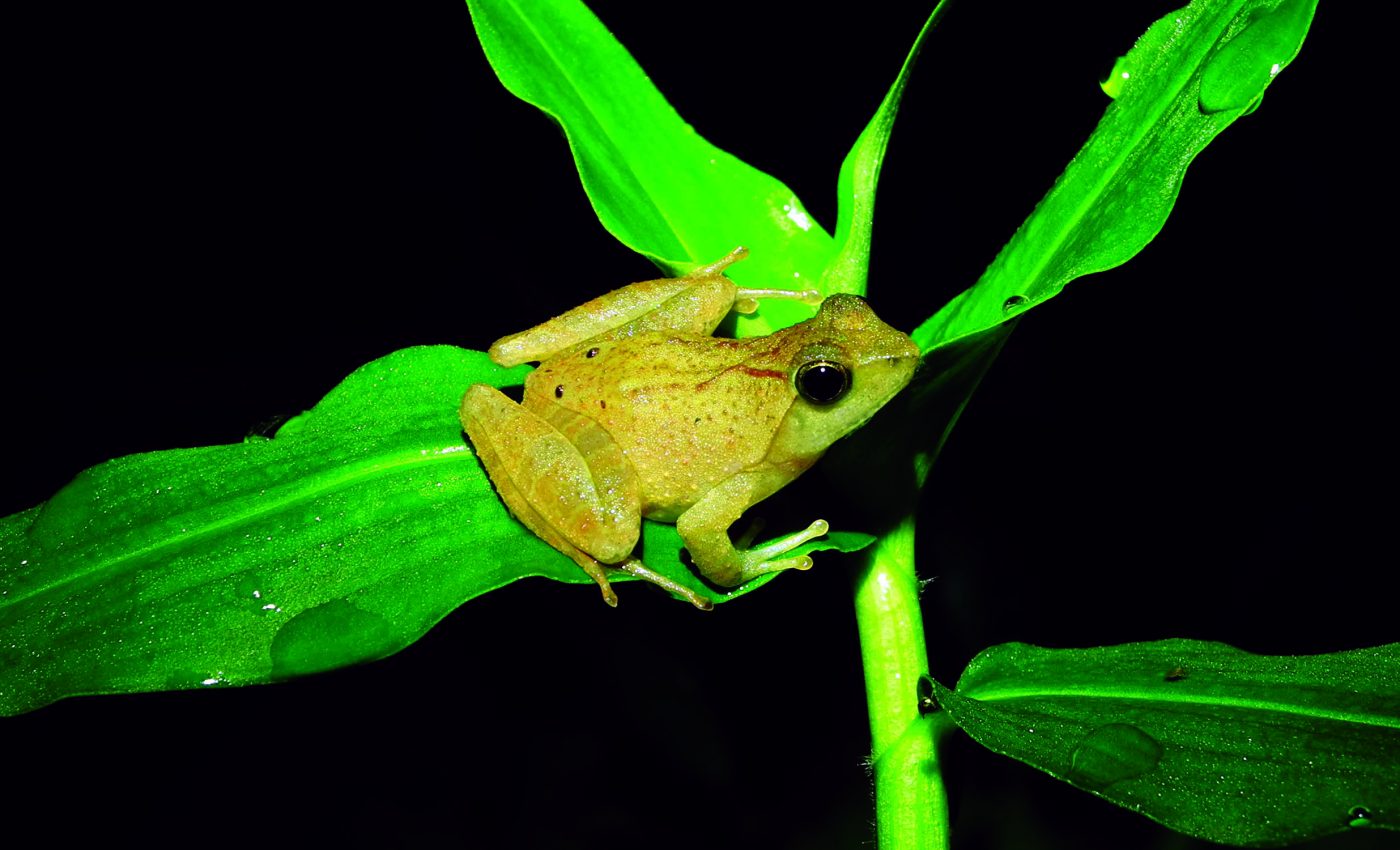
Puddle frogs have a secret weapon against climate change
Amid the looming threats of climate change, even species that seem ubiquitous – like the tiny tropical puddle frogs of Central Africa’s rainforests – face significant risks.
Scientific studies have consistently shown that protecting genetic diversity is essential for the survival of species as they navigate environmental upheavals.
Through meticulous DNA analysis of puddle frogs, researchers have discovered that regions with high environmental variability tend to support greater genetic diversity.
This genetic richness is crucial, as it might be the key to enabling these frogs to evolve and survive in changing climates.
Genetic keys to climate adaptation
The research was led by Dr. Courtney Miller from the University of New Orleans and Dr. Geraud Tasse Taboue from the University of Buea.
“Generally, the more genomic variation within a population, the more capable it is of adapting to environmental changes, such as those brought by future climate scenarios,” explained Dr. Miller.
“Our goal was to pinpoint what drives genomic variation and predict how populations might cope with future climatic shifts,” said Dr. Tasse Taboue.
Understanding evolutionary adaptability
The reality of the climate crisis is that it could transform our planet swiftly and drastically. Species like the puddle frogs will need to either find new suitable habitats or adapt through evolution or behavioral changes. Genetic diversity enhances a species’ ability to evolve successfully under such pressures.
The research was focused on the Gulf of Guinea and the Congo Basin – areas which are predicted to be severely impacted by climate changes and recognized as biodiversity hotspots.
Factors like geographical distances, physical barriers, environmental variability, and historical changes in landscape connectivity during the Pleistocene era all contribute to the genetic segregation and uniqueness of species populations.
Genetic responses to environmental changes
The team’s method involved sampling 191 frogs from various locations and habitats, extracting their DNA, and identifying different genetic variants.
The experts analyzed how environmental factors such as temperature and rainfall variability relate to the frogs’ habitats and how these might shift due to climate change.
This comprehensive approach helped the researchers understand both current and historical influences on genetic variation.
The results of the analysis indicated that genetic diversity in puddle frogs was not only a product of geographical separation but was also closely linked to environmental conditions, particularly seasonal precipitation patterns.
“Variation in precipitation is the primary environmental driver of genomic variation for this frog species,” noted Dr. Miller.
“Regions like the Cameroonian highlands and the forest-savanna boundaries in south-central Cameroon, stretching across the equator to the interiors of Gabon, are crucial as they likely enable frogs to keep pace with future climate changes.”
Conservation of puddle frogs
However, certain areas – such as southwest Gabon – were identified where frog populations lack sufficient genetic variation, potentially limiting their ability to adapt to sudden environmental changes.
While the research has provided valuable insights into the genomic makeup of puddle frogs, it has its limitations.
“We weren’t able to pinpoint variants under selection, which could have offered more insights into their adaptive potential,” said Dr. Tasse Taboue.
“Nonetheless, conservation efforts might focus on preserving areas rich in genomic variation, assuming these areas harbor individuals more likely to endure given environmental changes.”
Puddle frogs in a changing climate
The study underscores the importance of maintaining genetic variation as a buffer against the unpredictable shifts of the climate crisis.
The insights gained from the research may help to guide targeted conservation efforts aimed at sustaining biodiversity in some of the planet’s most vulnerable regions.
As we continue to witness the unfolding impacts of climate change, such research becomes ever more critical in shaping our strategies to protect the natural world.
More about puddle frogs
Puddle frogs, scientifically known as Occidozyga, are a genus of frogs commonly found in Southeast Asia.
They are named after their preference for living in puddles and other small, temporary bodies of water. These environments are ideal for puddle frogs due to their typically shallow depth, which helps in temperature regulation and provides protection from predators.
Adaptations
Puddle frogs have unique adaptations to these habitats; for instance, they often have flattened bodies that enable them to stay submerged in shallow water without being easily spotted.
These frogs are small to medium in size and have a varied diet, primarily feeding on insects and other small aquatic or semi-aquatic creatures.
Reproduction
They are known for their explosive breeding habits, taking advantage of the sudden availability of temporary pools formed by heavy rains.
During breeding season, males call to attract females, and the eggs are laid in the water, where they develop rapidly to complete their lifecycle before the puddles dry up.
Ecological role
Puddle frogs play a crucial role in their ecosystems, not only as predators of insects but also as prey for a variety of larger animals. They are also indicators of environmental health, with their presence and population sizes helping gauge the condition of their habitats.
The study is published in the journal Frontiers in Conservation Science.
—–
Like what you read? Subscribe to our newsletter for engaging articles, exclusive content, and the latest updates.
Check us out on EarthSnap, a free app brought to you by Eric Ralls and Earth.com.
—–













